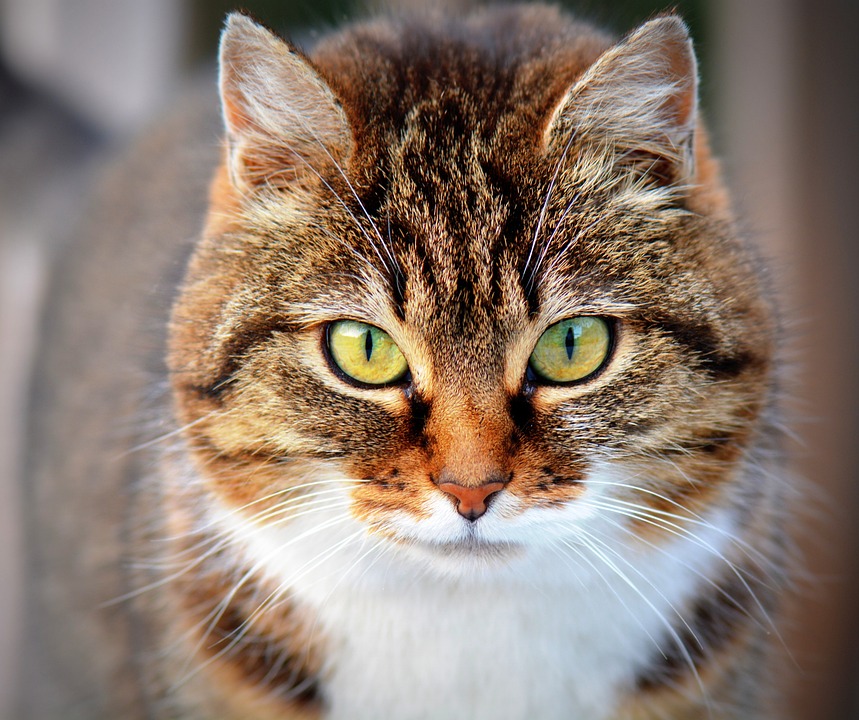Creating a Calming Space for Your Anxious or Fearful Cat
Helping Your Feline Friend Find Peace and Serenity
Introduction:
Cats, like humans, can experience anxiety and fear in certain situations. Whether it’s due to a change in their environment, a past traumatic experience, or simply their natural disposition, it’s important for cat owners to understand and address their feline friend’s anxiety. One effective way to do this is by creating a calming space specifically designed to help your cat feel safe and secure.
1. Designing the Perfect Environment:
When designing a calming space for your anxious or fearful cat, it’s essential to choose a quiet and secluded location. This will provide them with a sense of privacy and reduce external stimuli that may contribute to their anxiety. Additionally, providing hiding spots and safe spaces such as cat caves or covered beds will give them a place to retreat when they feel overwhelmed. Creating vertical spaces for climbing and perching, such as cat trees or shelves, will also give them a sense of security and control over their environment. Lastly, ensuring a comfortable temperature in the calming space is crucial for your cat’s overall comfort and relaxation.
2. Using Soothing Scents:
Soothing scents can have a remarkable impact on your cat’s anxiety levels. Pheromone products like Feliway and Comfort Zone mimic the natural pheromones that cats release when they feel safe and secure. These products can help create a calming atmosphere in the space. Additionally, natural remedies like lavender or chamomile can have a relaxing effect on cats. However, it’s important to avoid using strong odors that may stress your cat further.
3. Soft Background Sounds:
Just like humans, cats can be influenced by certain sounds. Playing gentle music or classical tunes in the calming space can create a soothing ambiance and drown out any external noises that may trigger anxiety. White noise machines or nature sounds can also help create a peaceful atmosphere. Some pet owners have found success using cat-specific relaxation music, which is specifically designed to calm anxious cats.
4. The Magic of Visual Stimulation:
Visual stimulation can be a powerful tool in reducing anxiety in cats. Installing bird feeders or fish tanks near the calming space can provide entertainment and distraction for your cat. They can observe the birds or fish, which can be both mentally stimulating and calming. Additionally, providing window perches for a view of the outside world can give your cat a sense of connection with the outdoors. Using toys and interactive puzzles for mental stimulation can also help redirect your cat’s focus and alleviate anxiety.
5. Creating a Consistent Routine:
Establishing a consistent routine is crucial for reducing anxiety in cats. Cats thrive on predictability, so incorporating a regular feeding schedule, playtime, and exercise into their daily routine can help them feel secure and alleviate anxiety. Maintaining a predictable daily routine will provide structure and stability for your cat, ultimately contributing to their overall well-being.
6. Strategies for Reducing Stress:
In addition to creating a calming space, there are strategies you can employ to reduce stress for your anxious cat. Minimizing loud noises and sudden movements in their environment can help them feel safe and secure. Limiting exposure to unfamiliar people or animals can also prevent triggering their anxiety. Gradual desensitization techniques, such as slowly introducing them to new experiences or environments, can help them build confidence and reduce fear over time.
7. FAQs (Frequently Asked Questions):
– Q1: How long does it take for a cat to adjust to a calming space?
Every cat is different, and the time it takes for them to adjust to a calming space can vary. Some cats may feel comfortable almost immediately, while others may take a few weeks or even months to fully settle in.
– Q2: Can I use essential oils to calm my anxious cat?
It’s important to consult with a veterinarian before using essential oils on your cat. Some essential oils can be toxic to cats, so it’s crucial to ensure the safety of any products before using them.
– Q3: What can I do if my cat is still anxious despite creating a calming space?
If your cat is still anxious despite your efforts to create a calming space, it may be beneficial to consult a veterinarian or an animal behaviorist. They can provide further guidance and recommend additional strategies or treatments to help your cat.
– Q4: Is it advisable to consult a veterinarian for anxiety issues in cats?
Yes, consulting a veterinarian is advisable if your cat is experiencing anxiety issues. They can rule out any underlying medical conditions and provide guidance on managing your cat’s anxiety.
– Q5: Are there any natural supplements that can help calm an anxious cat?
There are natural supplements available that can help calm an anxious cat, such as L-theanine or CBD oil. However, it’s important to consult with a veterinarian before introducing any supplements to your cat’s routine to ensure they are safe and appropriate for your cat’s specific needs.
Conclusion:
Creating a calming space for your anxious or fearful cat is essential for their overall well-being. By understanding their anxiety and fear and implementing strategies such as designing the perfect environment, using soothing scents, incorporating soft background sounds, providing visual stimulation, creating a consistent routine, and employing stress-reducing strategies, you can help your feline friend find peace and serenity. Remember to experiment with different techniques to find what works best for your cat, and don’t hesitate to seek professional advice if needed. Your cat’s happiness and well-being are worth the effort.








